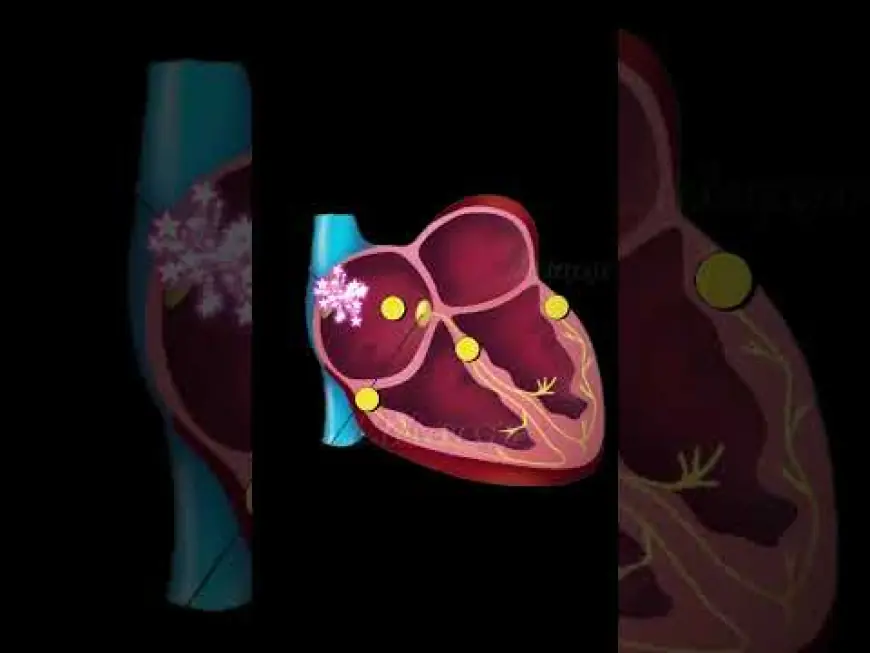Atrial Fibrillation (Afib) market growth trends, technological innovations, and regional opportunities analysis
Discover the atrial fibrillation (Afib) market summary highlighting key growth drivers, technological advancements, regional insights, and challenges. Learn how innovations in therapies and digital health tools are shaping future opportunities for improved patient care worldwide.

The global atrial fibrillation (Afib) Market is evolving rapidly, driven by the rising prevalence of cardiovascular disorders, advancements in minimally invasive procedures, and an aging population more vulnerable to heart rhythm irregularities. With technological innovations and growing awareness, the market continues to expand, although it faces challenges such as high treatment costs and limited access in developing regions.
Atrial fibrillation is the most common type of cardiac arrhythmia, characterized by irregular and often rapid heart rhythm that increases the risk of stroke, heart failure, and other cardiovascular complications. According to leading medical associations, millions of people worldwide live with Afib, and its incidence is increasing due to sedentary lifestyles, obesity, hypertension, and the global rise in diabetes. As a result, the market for treatments, devices, and medications targeting Afib is gaining strategic significance.
Market Dynamics
The Afib market is primarily driven by three factors: rising prevalence, technological innovation, and supportive healthcare policies. First, the growing patient pool is fueling demand for effective therapies and diagnostic tools. Second, the adoption of advanced ablation technologies, wearable monitoring devices, and AI-driven cardiac diagnostics is transforming how Afib is managed. Finally, government initiatives promoting cardiovascular health and reimbursement support in developed economies are boosting treatment adoption.
On the other hand, cost remains a significant barrier. Procedures such as catheter ablation, though effective, are often expensive and not accessible to all patients, especially in low- and middle-income countries. Additionally, anticoagulant therapies, while reducing the risk of stroke, carry risks of bleeding and require careful management.
Treatment Landscape
The treatment of atrial fibrillation falls into three main categories: pharmacological therapy, non-pharmacological interventions, and surgical approaches.
-
Pharmacological therapies include antiarrhythmic drugs, beta-blockers, and anticoagulants that help control heart rhythm and reduce stroke risk. The market for novel oral anticoagulants (NOACs) has expanded significantly as they are more effective and convenient than traditional warfarin.
-
Non-pharmacological interventions include catheter ablation and electrical cardioversion. Ablation technology, in particular, is witnessing significant innovation, with cryoablation and radiofrequency ablation offering higher success rates and reduced recurrence of Afib.
-
Surgical approaches such as maze procedures are less common but are used in patients with complex conditions where other treatments fail.
Technological Advancements
Innovation is reshaping the Afib market. The integration of wearable devices and remote monitoring systems is enabling early detection and continuous monitoring of patients. Smartwatches and digital ECG monitors have gained regulatory approvals, making it easier for patients and healthcare providers to track cardiac rhythms in real time. Furthermore, advancements in AI and machine learning are enhancing diagnostic accuracy, predicting risk factors, and enabling personalized treatment strategies.
Medical device companies are focusing on improving ablation devices to minimize complications and shorten procedure times. Cryoballoon catheters and laser ablation are gaining traction as they offer precise treatment with better safety profiles. These innovations not only improve patient outcomes but also enhance the cost-effectiveness of long-term Afib management.
Regional Insights
-
North America leads the global Afib market due to advanced healthcare infrastructure, high awareness, and supportive reimbursement policies. The United States, in particular, accounts for a major share with its widespread adoption of catheter ablation and NOAC therapies.
-
Europe follows closely, with increasing healthcare investments and growing elderly populations driving demand.
-
Asia-Pacific is expected to witness the fastest growth due to the rising burden of cardiovascular diseases, rapid urbanization, and improving healthcare systems. Countries such as China and India present significant opportunities, although affordability and access remain key challenges.
-
Latin America and the Middle East & Africa represent emerging markets with growing awareness and gradual adoption of advanced therapies, though infrastructure limitations persist.
Challenges and Opportunities
Despite strong growth prospects, the Afib market faces several inhibitors. High treatment costs, limited reimbursement in certain regions, and complications associated with long-term drug use are persistent challenges. Moreover, the shortage of skilled electrophysiologists in developing regions limits the widespread adoption of advanced procedures.
However, opportunities lie in early detection, preventive healthcare, and digital health integration. Pharmaceutical companies are investing in safer and more effective anticoagulants, while device manufacturers are focusing on minimally invasive ablation technologies. Additionally, partnerships between tech companies and healthcare providers are accelerating the adoption of wearable monitoring solutions.
Future Outlook
The atrial fibrillation market is expected to grow steadily in the coming years, with demand driven by rising patient numbers, technological progress, and supportive policy measures. While affordability and accessibility challenges remain, ongoing innovation and broader awareness are likely to bridge gaps in care. The market’s future will rely heavily on integrated care models, where pharmaceuticals, devices, and digital health tools work together to improve outcomes and reduce long-term costs.
In conclusion, the Afib market presents a complex yet promising landscape. While it is constrained by affordability and access issues, continuous advancements in therapy and technology, along with the push for early diagnosis, are expected to unlock significant opportunities for growth worldwide.
What's Your Reaction?
 Like
0
Like
0
 Dislike
0
Dislike
0
 Love
0
Love
0
 Funny
0
Funny
0
 Angry
0
Angry
0
 Sad
0
Sad
0
 Wow
0
Wow
0


















































